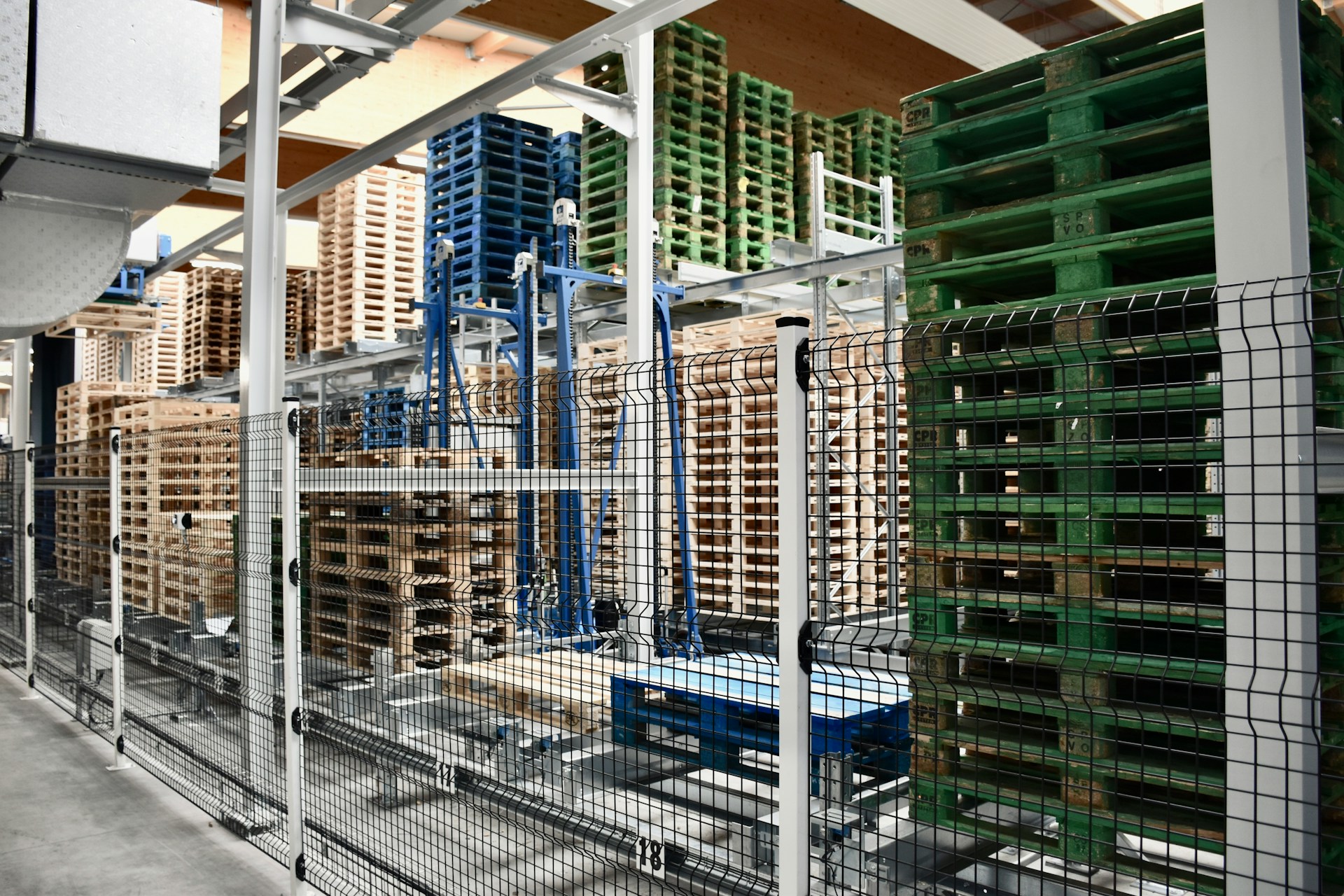In the bustling realm of produce packing, maintaining stellar standards in safety and quality is paramount.
Striking a balance between these two facets can be a formidable task, but by implementing the right strategies, it is entirely feasible.
This discussion aims to break down the process into actionable steps designed to hone these crucial elements within your operations, ultimately augmenting the overall performance.
The fruits of such strategic planning will not only be evident in improved output but also in the enhanced reputation in the market.
Strategies presented herein are both practical and applicable across various scales of operation, from small scale outfits to vast industrial setups.
Let’s delve into the fundamentals of elevating safety and quality in produce packing.
Contents
- Steps For Produce Packers To Achieve Top Grades In Safety & Quality
- 1. Implement strict personal hygiene and cleanliness protocols.
- 2. Conduct Regular Equipment and Facilities Maintenance
- 3. Undertake thorough product quality checks.
- 4. Train Staff in Safety and Handling Procedures
- 5. Use High-Quality Packing Materials and Techniques
- 6. Regularly Review and Update Safety Policies
- 7. Encourage and Reward Adherence to Safety Standards
- The Bottom Line
Steps For Produce Packers To Achieve Top Grades In Safety & Quality
1. Implement strict personal hygiene and cleanliness protocols.
The first step towards achieving top grades in safety and quality for produce packers is to implement strict personal hygiene and cleanliness protocols.
This step is incredibly crucial as it significantly reduces the chances of food contamination, thereby ensuring the safety and quality of the produce.
Personal hygiene protocols should cover areas such as the regular washing of hands, wearing clean and suitable clothing, and maintaining personal cleanliness.
Additionally, it also involves keeping any sickness or health concerns at bay that might adversely affect the produce.
It is crucial for workers handling the produce to be healthy and fit as any illness can easily contaminate the produce.
These protocols should also clarify the stringent rules for employees who exhibit any signs of illness.
The cleanliness protocols, on the other hand, entail maintaining the sanitation of the production facility and all equipment used in the packing process.
Cleanliness protocols should be in line with the global standard sanitation practices in the food industry.
These practices need to be integrated into the daily operations to ensure a sterile and safe environment for the produce.
Moreover, these cleanliness protocols should inform the schedule for regular disinfection of the packing equipment and facilities.
This routine helps in reducing potential hazards that might taint the quality and safety of the produce.
On top of that, an effective waste management strategy should be incorporated in the protocols to manage waste produced in the packing process.
Such strategy would prevent any buildup of garbage that could potentially become breeding grounds for pests and disease-causing organisms.
To maintain the efficacy of these hygiene and cleanliness protocols, they must be constantly updated and monitored for adherence.
Regular audits should be conducted to ensure that these protocols are not only being followed but are also effective in maintaining safety and quality.
All these measures, when implemented effectively, would create a work environment that would attribute to the production of safe and high-quality produce.
2. Conduct Regular Equipment and Facilities Maintenance
Maintaining your equipment and facilities is an integral part of attaining top safety and quality grades in the produce packing industry.Meticulous equipment maintenance not only optimizes the performance of the machinery but it also ensures safety, making it an indispensable aspect of production.
Failure to keep equipment in a top-notch condition can lead to defects and errors which might compromise safety and quality.
This is precisely why regular inspection of the equipment is compulsory. It helps to identify any potential issues and rectify them before they escalate and affect the production process.
Equipments like conveyor belts, automated packing machines, forklifts, among others, need to be regularly checked to ascertain their functionality and safety.
Similarly, maintaining a clean and well-organized facility ensures a safe working environment and prevents any potential hazards.
Evidently, poor sanitation can lead to the growth of harmful bacteria and pests, posing serious risks to the quality of the produce and the health of the employees.
Moreover, irregularities in the facility, such as wet floors or cluttered aisles, can cause accidents and disrupt the workflow.
Enhancing safety necessitates regularly cleaning and disinfecting the facility. Such imperative practices significantly reduce the risk of disease transmission.
It’s not just about cleaning but also about methodological organization. Implementing a systematic approach to store tools, materials and products in designated areas can significantly reduce the chances of accidents.
A efficient facilities maintenance strategy should also encompass protocols for effective waste disposal. Accumulation of waste can not only create an unhealthy environment, but also increase the risk of contamination.
Adherence to environmental management standards like ISO 14001 is also an important aspect of facilities maintenance. It guides organizations on how to manage their environmental responsibilities effectively and in a sustainable manner.
Another essential tool in your arsenal should be a well-designed maintenance plan. Regular preventive maintenance reduces equipment downtime, boosts productivity, and most importantly, ensures safety and quality.
It calls for a consistent investment of time and resources, but the pay off is certainly worth it: ensured safety, improved quality, and productivity.
Regular training and education of the staff regarding equipment handling and maintenance procedures also play a pivotal role in achieving the desired safety and quality standards. They not only aid in proper functioning of the machinery but also ensure their longevity.
Essentially, a well-maintained environment is a stepping stone to top-grade safety and quality standards in produce packing.
3. Undertake thorough product quality checks.
Given the critical role that product quality plays in customer satisfaction, it is paramount for produce packers to ensure that they carry out rigorous product quality checks.
This requires a well-structured and systematic review process of every item before it leaves the warehouse.
Quality checks should be comprehensive, checking the physical attributes of the produce, such as size, color, and freshness, but also delving deeper into aspects such as the produce’s nutrition content and whether it has been exposed to contaminants.
Attention to detail is paramount in this process, as it can detect potential issues or irregularities that may compromise the safety and quality of the produce.
The quality check process entails a visual inspection, tactile examination, and in some cases, laboratory testing to ensure the produce meets the set quality and safety standards.
Visual inspection involves examining the produce for visible defects or damage, such as bruises, cuts, or blemishes.
Meanwhile, tactile examination includes checking the texture and firmness of the produce to ensure it’s at the right maturity stage.
It is important that packers not overlook this vital step, as the texture can significantly affect the produce’s shelf life and flavor.
In some cases, laboratory testing may be necessary to check for contaminants, pesticide residues, or harmful bacteria that are not visible to the naked eye.
Packers should thus invest in this aspect of the quality check process and secure reliable laboratory services to carry out these checks as needed.
This is especially important for produce that will be eaten raw, as contaminants or harmful bacteria can cause serious health issues if not detected and removed.
Furthermore, frequent product quality checks enable producers to maintain a reliable quality record and allows for traceability in case of any safety incidents.
This traceability is invaluable in identifying and resolving any quality issues should they arise, hence safeguarding consumer health and safety.
Overall, thorough product quality checks are a cornerstone in achieving top safety grades and maintaining high-quality standards in the produce packing industry.
In a world where safety and quality are paramount, maintaining these checks can ensure that your produce stays competitive in the market, and consumers continue to have trust in the products they purchase.
4. Train Staff in Safety and Handling Procedures
In a produce packing operation, training staff in safety and handling procedures is a crucial step in ensuring overall quality and adherence to safety standards.
It is important that relevant safety protocols are communicated clearly and effectively.
Furthermore, the training should not be a one-off event but rather an ongoing process.
This is because safety standards and methods can change and evolve, hence, the need for employees to stay up-to-date.
Regular and comprehensive staff training can be the backbone of creating a safe and efficient working environment in a produce packing operation.
A well-trained staff will not only be able to uphold safety standards, but they will also be able to identify potential hazards or quality issues in the production line.
This ability to prevent accidents or lower quality products before they happen can be invaluable for the company.
Therefore, investing time and resources into thorough safety and handling training is a must.
The type of training can vary depending on the nature of the produce and the specific steps in the packing process.
For example, training can include proper handling of produce, effective usage of packing equipment, adhering to hygiene rules, and understanding the proper use of personal protective equipment (PPE).
Frequent refresher courses are also encouraged to ensure that the information remains fresh in the minds of the staff.
It can be helpful to conduct practical training exercises where employees can learn by doing rather than just reading about protocols.
Remember, the ultimate goal of safety and handling training is to ensure the wellbeing of the employees and the quality of the finished product.
Thus, commitment to effective training is a mark of an operation’s commitment to safety and quality.
With proper training, a produce packing company can minimize the chances of workplace accidents and produce recalls, enhance efficiency, and, eventually, increase overall productivity.
5. Use High-Quality Packing Materials and Techniques
A significant aspect of ensuring safety and quality in product packaging is the use of high-quality packing materials and techniques.
The primary purpose of packaging is to protect the produce from physical, chemical, and microbiological contaminants during transportation and storage.
The packaging material used should be durable, non-toxic, and adequately ventilated to maintain the freshness and quality of the produce.
Moreover, it should be designed to withstand various environmental conditions such as temperature changes, humidity, and stress during transportation and handling.
High-quality packing materials not only protect the produce but also add value to it by enhancing its physical appearance and shelf life.
Today, there are a variety of materials available for packaging, such as cardboard, wood, plastic, and biodegradable materials, each with its unique set of advantages and disadvantages.
For instance, using biodegradable materials like jute or cloth bags instead of plastic can be more environment-friendly, but they might not be as durable and resilient as plastic.
Hence, it is imperative to choose the right type of packaging material depending on the nature and purpose of the product.
Using advanced packaging techniques that incorporate modern science and technology can significantly improve product safety and quality.
Techniques such as vacuum packaging, aseptic packaging, and modified atmosphere packaging help extend the shelf life of the product and preserve its nutritional value.
Proper packaging etiquettes should also be followed, like not overfilling the packages and ensuring they are correctly sealed and labelled.
In such instances, investing in high-quality packaging machines may be a worthwhile choice for packers as these machines ensure accurate fill levels, secure sealing, and proper labelling.
An efficient quality control process should be in place to check the packaging quality periodically and address any issues immediately.
This process can include visual inspections, package integrity testing, and quality audits.
Thus, implementing the use of high-quality packing materials and techniques not only ensures the safety and quality of the product but also contributes to building a good brand image and improving customer satisfaction.
6. Regularly Review and Update Safety Policies
Produce packers understand the critical importance of safety policies in their industry.
The success of a business in this field is largely dependent on how well it can manage potential safety risks and issues.
An integral step in achieving top grades in safety and quality is to regularly review and update safety policies.
Changes in government regulations, technological advancements, and the change in packing processes are some reasons that necessitate regular updates of safety policies.
Keeping safety policies updated is imperative to not only meet compliance but also to ensure the health and safety of employees and customers.
In the process of reviewing safety policies, a deep analysis and understanding of the prevailing safety measures and guidelines is crucial.
All aspects of safety, from general work safety to handling machines and equipment, should be thoroughly reviewed and evaluated during this process.
What’s more, this policy review also provides an opportunity to assess the current safety situation and identify areas that require improvement.
It’s also vital to invite inputs from employees since they are the ones who are directly involved with the process.
Based on their insight and experience, one can gain a clearer understanding of the real-time challenges and issues that need to be addressed.
This process should also include regular training of staff and monitoring of the implementation of these safety policies.
Effective policies are those that are implemented diligently and are able to bring a real positive change in the workplace.
Ensuring the regular update of these policies not only contributes to the overall safety performance but also builds the reputation of the company and its commitment to quality and safety.
Technological advancements can also be a part of these updates, as they may suggest better or more efficient ways of maintaining safety.
Moreover, keeping these safety policies updated is also a sign that the company is always ready to adapt and improve, a key characteristic for a company that seeks to achieve top grades in safety & quality.
7. Encourage and Reward Adherence to Safety Standards
For produce packers looking to achieve top grades in safety and quality, an essential component is the encouragement and rewarding of compliance with safety standards.
In any organization, the culture plays a significant role in shaping behavior and performance.
Therefore, fostering a workplace culture that values and acknowledges the importance of safety standards is critical.
Creating this kind of environment not only encourages the consistent application of safety protocols but also enhances productivity and the quality of work produced.
Monitoring the adherence to safety rules and providing incentives for the same can significantly encourage employees to strictly comply with safety procedures.
This may involve setting up a reward system where employees who demonstrate exceptional adherence to safety standards are recognized and rewarded.
These rewards could be in various forms such as monetary incentives, additional leaves, recognition in company communications, or even a simple thank you note.
The aim of these rewards is not just to motivate the individual employees but also to inspire others in the organization.
Moreover, rewarding safety practices helps in realigning the whole team’s focus towards promoting a safe and quality-focused working environment.
However, it’s crucial to ensure that all employees understand the safety standards and why they are in place.
Thus, it is necessary to invest thoroughly in safety training and education to ensure that every team member is equipped with the requisite knowledge and skills to uphold safety standards.
Ongoing reinforcement and feedback is also key, as it offers an opportunity for continual learning and improvement.
Furthermore, it’s equally important to engage and involve employees in safety programs to make them feel a part of the process.
This involvement can be achieved through regular meetings and open dialogues where employees can air their views or concerns regarding safety standards.
In this way, employees can actively participate in the continuous improvement of safety practices.
Ultimately, ensuring top grades in safety and quality involves creating a supportive environment where adherence to safety standards is encouraged, recognized, and rewarded on an ongoing basis.
The Bottom Line
Enhancing safety in operational environments is imperative and necessitates a multi-faceted approach.
Our endeavors must encompass diligent personal hygiene, maintenance of facilities, comprehensive product inspections, workforce training, and usage of superior packaging materials.
Continual policy reviews are also essential to stay in pace with evolving safety standards.
Lastly, we have determined that fostering a culture of safety by rewarding compliance to safety norms yields positive results.
These concerted efforts not only mitigate risks but additionally foster a culture of accountability and safety, enhancing overall operational standards and efficiency.




